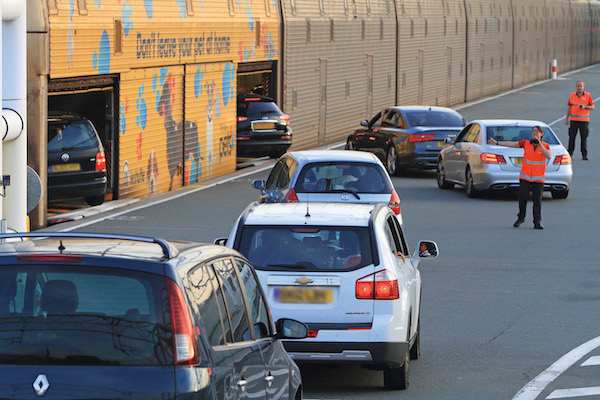The impending launch of the EU’s new Entry/Exit System (EES) has raised concerns about potential travel delays. However, the Eurotunnel chief executive reassures minimal disruption at terminals. This article examines the measures in place to manage the transition smoothly.
- Eurotunnel’s CEO, Yann Leriche, forecasts only minor delays of five to seven minutes at terminals despite the new system requirements.
- Travellers will need to provide biometric data at borders, which will replace the traditional passport stamping.
- Investments of £70 million have been made to enhance processing facilities at Folkestone and Calais.
- The introduction of additional lanes and new technology aims to ensure a smooth passenger experience.
The upcoming implementation of the EU’s Entry/Exit System (EES) in October has sparked concerns about potential long queues at Eurotunnel terminals. Britons travelling to and from the continent will be required to register fingerprints and photographs at the border, replacing the existing manual passport stamping process. Despite these apprehensions, Yann Leriche, the chief executive of Eurotunnel operator Getlink, remains optimistic about the transition, suggesting that with proper planning, the impact on travel time will be manageable.
Leriche anticipates that Le Shuttle journeys will only be extended by five to seven minutes due to the new protocols. To facilitate a smooth transition, the Eurotunnel has invested the equivalent of £70 million at its Folkestone and Calais sites, creating dedicated processing zones where travellers can register their biometric information efficiently. These enhancements are expected to streamline the process considerably, minimising disruption.
As part of the robust measures in place, extra lanes and advanced technologies will be incorporated, allowing for a quicker movement of vehicles and passengers through the checkpoints. French border police will undertake the biometric checks, with a system designed for efficiency and minimal inconvenience to travellers. At key junctions such as the Port of Dover, Eurostar’s St Pancras terminus in London, and the Channel Tunnel in Folkestone, procedures will be conducted to ensure seamless travel.
Yann Leriche has assured that as travellers approach processing points, they ‘will simply get out of their car, spend a few minutes on their kiosks, and then continue their journey.’ The company has also planned to recruit an additional 140 staff members to assist with the process, reinforcing their confidence in managing potential queues effectively.
Furthermore, Leriche mentioned the possibility of increased competition for Eurostar in the near future, suggesting that the Channel Tunnel could witness a doubling of direct connections between London and Europe within the next decade. This development aligns with the broader objective of enhancing connectivity and travel efficiency across the region.
Despite initial concerns, Eurotunnel officials are confident in their strategies to mitigate delays caused by the new EES implementation.

